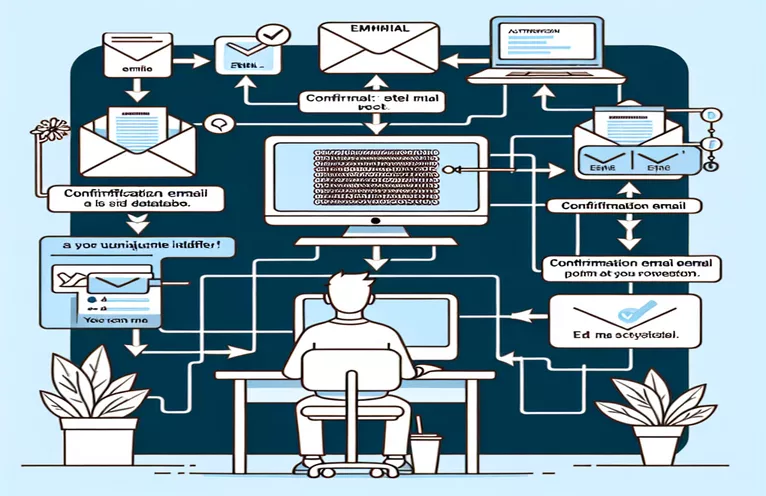The key to effective authentication
The topic of authentication is crucial in the broad field of web development. Selecting the appropriate approach can boost security while also enhancing user experience. Email addresses are becoming more and more used as primary keys in authentication systems. This method, which appears straightforward, conceals a surprising level of effectiveness and enables quick and distinct user identification.
One of the many benefits of this approach is that consumers can easily remember their ID. The chance of duplication and authentication issues is decreased because each email address is unique, unlike usernames, which can be hard to remember or already taken. It also makes the process of recovering an account easier, which is important for preserving safe access to internet services.
| Order | Description |
|---|---|
| CREATE TABLE | Generates a brand-new database table. |
| PRIMARY KEY | Defines a column as the table's main key. |
| UNIQUE | Makes certain that each value in a column is distinct. |
| INSERT INTO | Adds information to the table. |
| SELECT | Chooses information from the database. |
The Benefits and Risks of Using Email as Your Main Key
There are numerous advantages for both developers and consumers when using email addresses as primary keys in databases for user authentication. First, by lowering the amount of required fields, it streamlines the registration and login procedure, which can greatly enhance user experience. This is because users can maintain their accounts more easily and are less likely to forget their usernames because they do not need to memorize them. Moreover, implementing features like password recovery and identity verification is made simpler by using the email address as a unique identifier, which raises system security overall.
But there are drawbacks to this strategy as well, and some safety measures are needed. One of the first priorities needs to be protecting personal information, especially email addresses. To stop sensitive data from leaking, developers must make sure databases are properly secured and that data security mechanisms like encryption are in place. It's also critical to take into account the possibility of user email address changes, which might make account administration more difficult. Thus, a regular email verification and update plan is essential to preserving the authenticity of the authentication system.
Creating the user table
SQL, Structured Query Language
CREATE TABLE Utilisateurs (email VARCHAR(255) NOT ,nom VARCHAR(100),prenom VARCHAR(100),mot_de_passe VARCHAR(50),PRIMARY KEY (email));
Inserting a new user
SQL data manipulation language
INSERT INTO Utilisateurs (email, nom, prenom, mot_de_passe)VALUES ('exemple@domaine.com', 'Doe', 'John', 'motdepasse');
Choosing a user via email
SQL request
SELECT * FROM UtilisateursWHERE email = 'exemple@domaine.com';
Email locks and keys as distinct identifiers
Because it offers a seamless and secure user experience, adopting email addresses as the primary key in online authentication systems is a practice that is becoming more and more common. In addition to streamlining the connection and registration procedures, this approach offers an identity verification mechanism for users during the registration phase. Developers may streamline password reset and account recovery processes by employing email as a unique identifier, increasing user accessibility and security.
But data security needs to be given extra consideration while using this strategy. Strong security rules must be put in place to guard against data leaks and unwanted access to sensitive information. This involves applying security measures like two-factor authentication to bolster the protection of user accounts and using sophisticated encryption algorithms for data that is transported and stored. Furthermore, it is essential to provide features that let users quickly change their email addresses without jeopardizing account integrity or security.
FAQs Regarding the Primary Key of Email
- Is it safe to use a primary key that is an email address?
- Yes, as long as sufficient security measures are in place to secure sensitive data, like data encryption and two-factor authentication.
- What occurs when someone modifies their email address?
- Establishing a procedure for users to change their email address is essential. Identity theft must be prevented by doing this safely.
- In the database, how should duplicate email addresses be handled?
- By using the email address as the primary key, duplicate entries are prevented and each entry is guaranteed to be unique.
- What benefits does this approach offer to users?
- Simplified navigation, eliminating the need to remember several usernames, and simpler account recovery are among the advantages for users.
- Does this approach work for every kind of application?
- Despite its broad applicability, it should be assessed individually for each application, taking into account its unique security and user experience requirements.
- How can this technique be safely implemented?
- By implementing two-factor authentication, employing encryption techniques for sensitive data, and maintaining database security as a whole.
- Does this strategy have any hazards related to spam or phishing?
- There is danger associated with any credential, but it can be reduced with user knowledge and robust security procedures.
- Can I get my account back if I can't access my email?
- Yes, in order to regain the account by using different identity verification techniques.
- Does the use of an email address affect the performance of databases?
- No, employing email addresses as primary keys shouldn't have a detrimental impact on performance if the database is appropriately planned and optimized.
A step toward safer and more straightforward authentication
To sum up, employing the email address as the primary key presents a viable way to enhance user experience without sacrificing security. This method makes account management easier for consumers by streamlining the authentication procedure. To safeguard personal information, it does, however, lay the onus of implementing strong security measures on developers. With methodical planning and design, related difficulties like handling email address changes and stopping data leaks can be overcome. Therefore, using an email address as a unique identification is a good idea—as long as it's implemented carefully and with consideration for security considerations.


